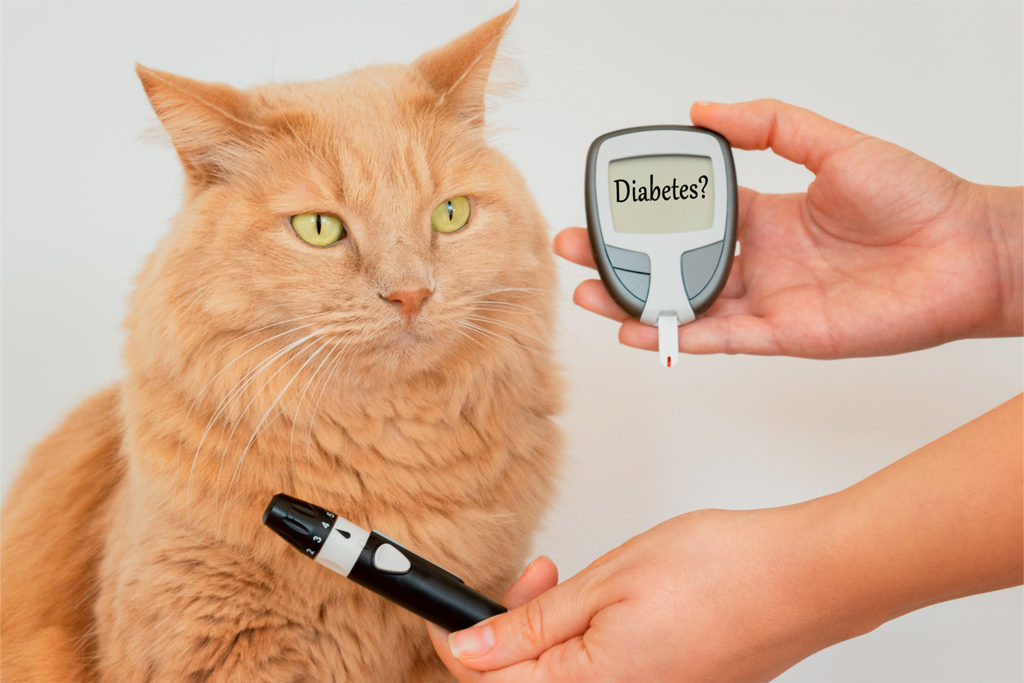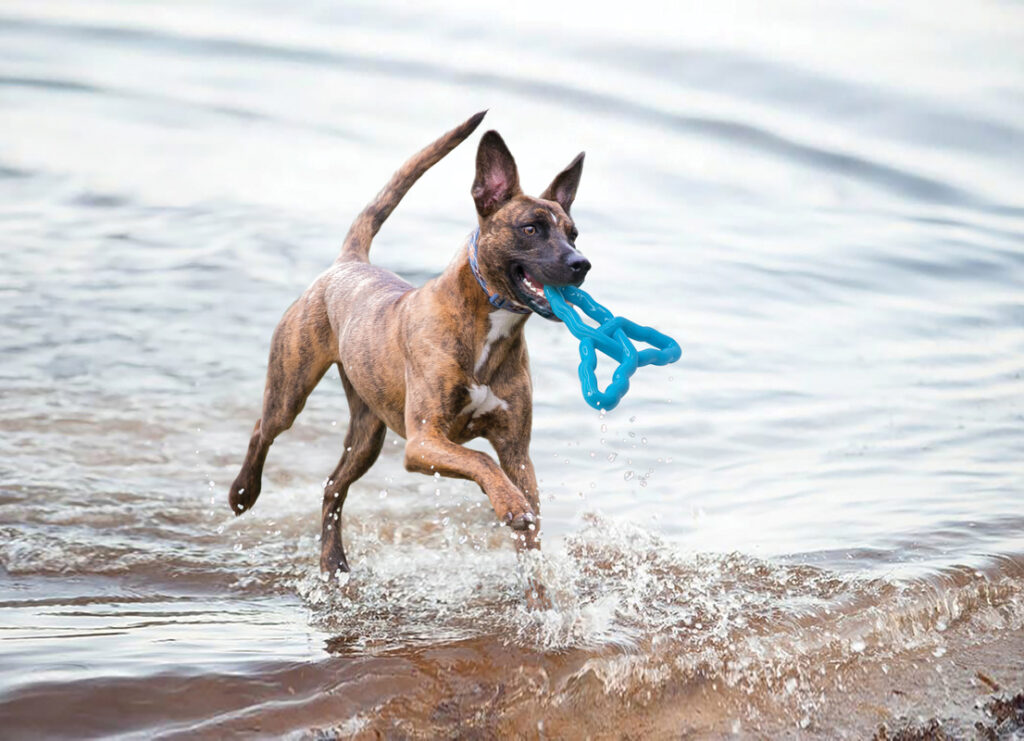Just like humans, cats can also suffer from diabetes. This can be a scary diagnosis for your cat, especially if left unchecked. Let’s discuss the signs of diabetes so you can keep a special eye on your furry friend and get them the treatment they need if you suspect diabetes.
What Is Diabetes?
Diabetes is a condition where the pancreas doesn’t produce enough of the hormone called insulin, or the body doesn’t respond correctly to insulin. Insulin is used in the body to process sugar (called glucose) in the body effectively. Without it, your cat may appear malnourished and may exhibit other symptoms.
There are two types of diabetes that can be present in cats, Type I and Type II. Type I diabetes occurs when the pancreas does not produce enough insulin to help balance blood sugar and blood glucose levels.
Type II diabetes is when the pancreas produces insulin, but the body does not respond to it correctly. This is called insulin resistance.
Type II diabetes mellitus is most prevalent in cats and is mainly caused by obesity. This is a big reason why you should monitor your cat’s weight and encourage your cat to stay active.
Playing with toys is an easy way to keep your cat active and trim.
Symptoms of Diabetes
The following symptoms are the most common to see in a diabetic cat. It can be hard to spot these symptoms if your cat has just recently developed diabetes.
If you notice that something is a little off with your cat, it may be helpful to record any behaviors in a notebook so you can check for patterns. The earlier diabetes is caught, the better, as untreated diabetes can cause your cat to become very ill.
Consider these following clinical signs:
Increased Urination
If you find that your cat is using their litter box more often to urinate, this can be indicative of diabetes. The kidneys can become overwhelmed. This causes an excessive amount of sugar to be present in the blood. This causes your cat’s urine to become more diluted, and they will have to relieve themselves more often.
This symptom may be one of the harder to spot in your cat, especially if they are on a wet food diet. Your cat may not have as much of a need to drink water as they will intake an ample amount of water in their wet food. Keep an eye on their litter box if you suspect that your cat is urinating more than usual.
Thirsty Kitty
You may find yourself refilling your cat’s water bowl much more than you used to. With the increased urination (polyuria), your kitty will need to drink more water to replace the water that was lost in their body. Your cat will feel dehydrated and will drink copious amounts of water to quench their thirst.
This increased thirst is called polydipsia.
Second and Third Helpings: Increased Appetite
Since your cat’s cells are not able to properly process the glucose in the food it ingests, your cat will still feel hungry as their body is not obtaining the nutrients it needs. This causes your cat’s appetite to increase, and your kitty may never seem like they are satisfied after eating bowl after bowl of food.
Weight Loss
Although your cat may be eating more food, they are looking quite skinny. Since glucose in your cat’s food is not able to be processed, your cat’s body has to look for other ways to sustain itself. It will start to burn fat and then muscle, causing your kitty to lose weight.
Weakness and Lethargy
If your cat is not jumping into their cat tree or perch, and they seem to be lethargic, their energy levels could be off. Decreased energy can be caused by the body not being able to process nutrients properly and instead burns muscle.
If your cat’s walk changes, especially how they move their back legs, this also can be a sign of untreated diabetes. Damage to the nerves from high levels of glucose can leave your cat feeling wobbly on their legs, and they may not be able to keep themselves up on the paws. Instead, you’ll find that your cat will walk on their hocks. This looks as if your cat has long back feet.
Next Steps
If you witness these combined symptoms in your cat, taking your cat to the veterinarian clinic is the next important step. Untreated diabetes is harmful to your cat and can make them very ill.
Vets will often run blood and urine tests to determine if the cause of these symptoms is indeed diabetes. This will include monitoring the presence of glucose in your cat’s blood and urine. With type 1 diabetes, your vet will likely see high blood glucose concentrations.
Your vet will likely run other tests so they can make certain that these symptoms are not caused by other ailments, like kidney disease or hyperthyroidism.
Treatment
The good news is that diabetes is treatable in cats. It may take some time to come to the perfect treatment plan, as your cat’s needs may change over time. It’s vital to have regular appointments with your cat’s veterinarian so they can keep track of their glucose levels and make adjustments as needed to keep your cat’s glucose levels stable.
You’ll also need to keep track of their dietary and water intake, as well as weight, to determine if the treatments are beneficial to your cat.
Insulin therapy, as well as a balanced diet, is the best combination for the treatment of feline diabetes. Oral medications are not considered to be as effective.
Insulin injections may seem daunting, but with practice, you will be a pro at administering the medicine that is life-saving to your cat. Your veterinarian or vet techs can give you a crash course in administering injections, and you can practice on fruit until you have the hang of it.
The needle size is very small, and cats respond well to the injections. Timing of injections is essential as well. Cats typically receive two injections a day, spaced 12 hours apart. Your veterinarian will determine the type of insulin used after considering the specific levels and needs of your cat.
When it comes to your cat’s diet, a low carbohydrate plan is best for lowering the amount of insulin your cat needs. Dry cat foods are carbohydrate-heavy, so a canned diet may be best for your cat.
Of course, consulting your veterinarian is vital when making a diet change as they can recommend effective brands, or they might recommend prescription food for your cat.
Diabetic Remission
In time, your cat may even go into remission with effective treatment. If your cat does go into remission, this means that their body is able to maintain glucose levels without the help of extra insulin. This does not mean that your cat is fully cured, so they will need to continue with their special diet.
It is important to keep up with constant monitoring to look for possible remission because your cat may become ill if they receive insulin that they do not need. This illness is called hypoglycemia and happens when the insulin causes the body’s glucose levels to drop too far.
Symptoms of hypoglycemia include being disoriented. Your cat may appear glassy-eyed and may start to drool. They may have poor coordination and run into furniture or not be able to walk normally. Your cat may also show odd behaviors, like yowling and wanting to hide.
If this occurs, you’ll want to have your cat ingest a form of sugar into their diet right away. You can do this by mixing honey in your cat’s food. If they are not interested in their food, you can rub the honey or even sugar onto their gums.
If the hypoglycemia is too intense, your cat could go into a coma or have seizures due to the cat’s blood sugar falling too low. It can be a very scary ordeal, so keeping insulin levels in the right range is important.
There is a possibility that your cat may not go into remission and will need to continue with treatment for the rest of their life. If it has been over six months since your cat was diagnosed with diabetes, and they have not entered remission, it is likely that lifelong treatment will be the plan.
Continued Treatment and Care
Diabetes is a lifelong issue, but it is treatable. Keeping your cat’s treatment consistent and changing when necessary is key to keeping your furry feline friend healthy.
With any concerned pet parent, you are bound to have questions. Being a member of the KONG Club is a great way to keep your pet healthy and happy.
KONG Club members have access to AskVet’s veterinarians 24 hours a day, seven days a week. This is a great resource to have when you have a quick question (or even an emergency) and are not able to connect with your regular veterinarian. Not only can you access the best vets, but you can also chat with animal dieticians and behaviorists for an even wider range of inquiries.
Pet parents also have the AskVet Clubhouse to trade advice and tips. We all love to talk about our pets, and this is a great place to discuss our pet’s health and offer encouragement.
Although feline diabetes can be a scary thing, your friends at KONG Club are here to support you and your furry pal.
Sources:
4 Possible Signs of Diabetes in Cats | Boehringer-Ingelheim
Feline Diabetes | Cornell University College of Veterinary Medicine



